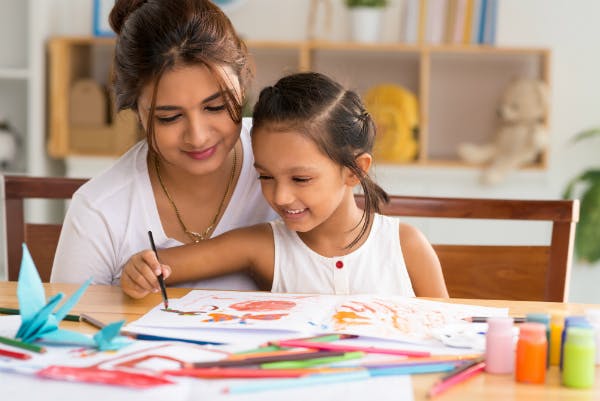

No single teaching approach will engage each student at once, but building a strategy to consistently deliver culturally-responsive teaching lessons will help you appeal to diverse learners with distinct backgrounds.
Rooted in differentiated instruction principles, culturally-responsive pedagogy aims to link content — from delivery to assessment — with students’ ancestral and contemporary cultures.
To augment their understanding and responsiveness, this involves:
To help you plan and deliver lessons that resonate with a diverse classroom, we’ll explain what culturally responsive teaching is and how it is implemented.
We also put together 15 culturally-responsive teaching strategies and examples that will resonate with diverse students and foster an inclusive classroom environment.
These strategies are available as a downloadable list below for quick reference so you can reference them during classroom instruction.
Let’s start with some simple explanation of what culturally responsive teaching actually means.
Culturally responsive teaching (CRT) is a pedagogy that acknowledges and embraces students’ cultures, languages and experiences - and relates them to classroom learning.
Culturally responsive teachers are actively aware of the various cultural backgrounds present in their classrooms, and act as a facilitator of lessons that can resonate with each.
It is not an easy task - creating this learning environment requires not only a high level of cultural competence, but also an intentional effort to learn about students’ backgrounds and cultures.
It can be majorly beneficial to closing achievement gaps between students of different backgrounds and addressing inequities in the classroom. You can also create stronger partnerships with your students by fostering a learning environment where they are represented clearly.

Reflected in the 15 strategies and examples in the next section, there are four conditions any teacher must fulfill to establish a culturally-responsive classroom, according to an authoritative academic book about the subject called Diversity and Motivation.
As you prepare and deliver any lesson, strive to:
This starts by highlighting how the topic you’re teaching may relate or apply to students. For example, many societies and cultures have fireworks festivals.
While such a festival runs, you could teach how to calculate speed using fireworks in sample questions. Establishing inclusion also involves regularly grouping students with different classmates, encouraging discussion to solve problems. In doing so, they can share unique perspectives and diverse background knowledge.
This further focuses on relating content to students. A popular method is allowing them to choose between activities and assessments that let them showcase their values, strengths and experiences.
For example, while providing clear learning goals and evaluation criteria, encourage students to submit their own project ideas.
You can bolster lesson content by drawing connections with real-world issues, asking students to use opinions and existing knowledge to address them.
For example, when teaching about government, you could contextualize concepts through municipal political issues. When appropriate, use student jargon to clarify these issues or improve communication in general.
Make the assessment process less intimidating by offering different ways to demonstrate skills and understanding. For example, avoid handing out quizzes that are purely multiple choice or fill-in-the-blank.
Among other question types, mix in problems that involve writing short- and long-form answers. After, give students time to assess their own progress and performance, helping them focus on growth.
Meeting these four conditions largely relies on using specific approaches, such as the 15 explored below.

At the start of the year or semester, demonstrating a desire to adapt your teaching style to students can help them feel valued. Because open communication should uncover their learning needs and preferences, try:
Once you’ve gathered enough information, tell the class you’ll focus on adjusting your teaching approach to help them learn as best as they can. Students should quickly warm up to you.
You’ll build a stronger understanding of students’ values and habits — as well as strengths and weaknesses — by individually asking them questions. While running a large-group exercise, pull each student aside for a few minutes. Ask about:
Note what each student says to identify themes and different preferences. Then, when possible, relate content to their interests and deliver lessons that appeal to shared strengths.

Many students will take a greater interest in math if you use word problems to contextualize equations. Working with 41 7th grade students throughout an academic year, a study published by the Canadian Center of Science and Education used such contextual learning strategies to increase test scores by more than 44%. Create culturally-relevant word problems by:
Using these word problem tips will not only help you establish a culturally-responsive classroom, but engage students more than by using abstract questions.
Delivering relatable content goes beyond math class. In any subject, you can grab and keep student attention by using their vocabulary to build understanding before moving to academic diction. Let’s say many of your students are sports fans with family from soccer-crazed nations. Use a soccer example to demonstrate metaphors in language arts class:
Andrea Pirlo is an eagle on the pitch, armed with vision sharp enough to detect the smallest openings and recognize opportunities his opposition can’t.
This kind of culturally-responsive language should open the door to presenting challenging skills and concepts, engaging students while doing so.

Guest speakers can bring context and passion to history, geography and social studies lessons, capturing student interest.
A war veteran could deliver a vivid narrative of his or her experiences. A mountaineer could give a striking recount of scaling Lhotse. Both could answer questions many teachers would struggle with, while engaging students much more effectively than a slideshow.
Plus, according to a study by the Economics of Education Review, students are often encouraged to work harder when they share a background with an educator. So, diverse guest speakers may inherently engage and motivate students who share a culture with them.
Whether due to culture, socialization, preference or learning needs, students respond differently to different types of content. You can provide a range of material to each student by setting up learning stations. Each station should use a unique method of teaching a skill or concept related to your lesson.
For example, students can rotate between stations that involve:
After going through each station, you can help students further process the material by holding a class discussion or assigning questions to answer.

Want another way to consistently diversify content and its delivery, appealing to different learning styles? Gamify some lesson elements. Easy-to-implement practices include:
Plus, gamifying your lessons is a way of making connections with contemporary gaming culture — helping students within this culture process and demonstrate understanding of content.
Call-and-response — the practice of asking students frequent questions while giving lessons — usually keeps them engaged, but also enables them to share thoughts and opinions. Involve everyone by:
By lesson’s end, this call-and-response approach should allow each student to speak at least once.

Children process content more effectively when their cultures and languages have places in the curriculum, according to an oft-cited academic book about teaching in multiracial schools.
Using media, such as books and movies, that positively depict a range of cultures and are relevant to your syllabus can partially address this need. Finding options through databases such as IMDB or American Literature isn’t a tough task.
As a bonus, using different media should boost engagement levels.
Free study time typically appeals to students who prefer solo learning, but many cultures prioritize learning in group settings. You can meet both preferences by dividing your class into clearly-sectioned team and individual activities, such as the following:
Presented with these options, free study time should appeal to a wider range of learners.

By asking students to submit ideas for their own projects, the benefits of choice extend beyond free study time. Specifically, they should build confidence by showcasing their strengths and existing background knowledge.
So, encourage them to pitch ideas for taking a project from concept to completion. A student must show how the product will meet academic standards in his or her pitch. If the idea falls short, give the student ideas to refine it. If the student can’t refine the idea, he or she can choose a project from a list of options you provide.
Not only will you be pleasantly surprised by some pitches, but you may generate ideas for future culturally-responsive exercises and assessments.
There’ll almost always be some student vocabulary and communal practices you never pick up on. But you can fill these gaps through peer teaching. Relatively-simple exercises include:
Students who read and discuss story passages with peers recall more content and score higher on assessments, according an Ohio University pilot study. And, according to a science education study, students who work in pairs and groups typically perform better on tests that involve reasoning and critical thinking.
Such results are largely achieved due to students discussing and rationalizing concepts in their own words, many of which belong to contemporary cultural lexicon and are not academic.

Cooperative base groups — which come from collaborative learning pedagogy — allow students to regularly learn and process content together.
Your role consists of creating groups of three or four, scheduling meeting times and detailing agendas for them. Filling knowledge gaps and encouraging communication is also involved. Students’ roles focus on supporting each other while striving to meet learning goals over the year.
While working in base groups, students can:
The connection to culturally-responsive teaching is the same as peer learning: cooperative base groups encourage students to make sense of concepts you’ve taught by using their own words and thoughts.
The flexibility of problem-based learning lends itself to culturally-responsive teaching. This is because, when presenting a relatable real-world problem for your students to solve, two cultural connections will typically occur.
But if you want to create a scenario with explicit cultural ties, consider:
Regardless, the student-centred nature of problem-based learning will allow your class to use culturally-relevant examples and information when appropriate.

Involving parents in their child’s learning is a core part of almost any culturally-responsive teaching approach -- they act as the main educators in many societies and can provide cultural context. When starting a new unit or trying out an education tool for the first time, consider sending a letter home to parents.
For reference, here’s the letter Prodigy provides to its teachers. This opens the door to parent participation. While not all parents will be subject matter experts, most should be able to provide guidance.
Click here to download and print a simplified list of the 15 culturally-responsive teaching strategies and examples to keep at your desk.
Culturally-responsive teaching strategies overlap in important ways with many other pedagogical approaches. Consider researching other teaching and instructional strategies to help bolster your approach, or combine different elements of each strategy!
Delivering culturally-responsive lessons can not only help you engage students, but allow them to make personal connections with content.
Student populations across your school district are comprised of different races, backgrounds, cultural identities and socioeconomic statuses - it’s important that teaching practices reflect and embrace these differences.
Greater student investment should lead to other benefits, such as more rigor and motivation. A happier, focused classroom is the ideal outcome.
Prodigy is a digital game-based learning platform that delivers a range of culturally-relevant math content through engaging word and scenario-based problems. Standards-aligned, it’s used by millions of teachers and students across the world.